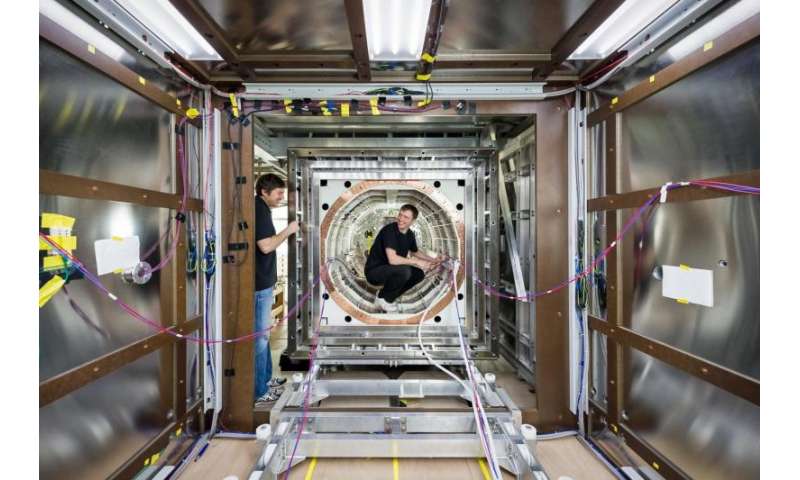Year in Review—The most important research of 2015: May

(ScienceX)—In this new monthly series, we are offering summary articles featuring links to some of the most interesting, intriguing or popular stories that appeared on ScienceX throughout 2015. This is the May 2015 edition.
In physics news, an international team of researchers announced that they had developed a new shield that makes certain types of searches for physics beyond the Standard Model possible for the first time—it allows for an extremely low magnetic field over a large volume. Another team with members from Germany, China and the U.S. wondered what happens when Newton's third law is broken. They showed that some classes of non-equilibrium systems can be described exactly in terms of the equilibrium's statistical mechanics. A team at TU Delft reported that they had found a way to break the aluminum 'monopoly', enabling the reading and manipulation of quantum states that have been encoded in prospective Majorana qubits. And a team at the Australian National University confirmed quantum theory weirdness by proving that reality does not actually exist until it has been measured. Also, another team working in France found that when looking at what happens when an electron splits in two, they could observe single-electron fractionalization on the picosecond scale.
In technology news, a team of researchers working at NASA's Langley Research Center announced the development of a ten-engine electric plane prototype—demonstrations showed it could take off and land like a helicopter and fly like a plane. A team working at the University of Texas announced that they had developed a new centimeter-accurate GPS system that could transform virtual reality and mobile devices, because orientation would be far more precise. And a team at MIT added new functionality to a cheetah robot making it able to land the running jump—the first for a four-legged robot.
In medical news, there were a couple of stories that made headlines. First, a team of medical researchers at Wyckoff Heights Medical Center wondered if a mother's cellphone startles the fetus. They found it might by interfering with the fetus's sleep/wake cycle. Also, a team at Microsoft found that the human attention span now lags behind goldfish, due to the use of digital devices.
The January 2015 edition of our Year in Review series can be read here.
The February 2015 edition of our Year in Review series can be read here.
The March 2015 edition of our Year in Review series can be read here.
The April 2015 edition of our Year in Review series can be read here
© 2015 ScienceX